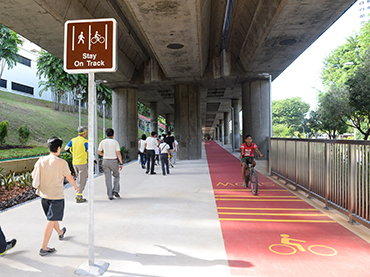Written Reply to Parliamentary Question on Enforcement Against Illegal Use of Active Mobility Devices
Mr Seah Kian Peng asked the Minister for Transport since the Active Mobility Act came into force in May 2018, what are the number and types of enforcement actions taken against persons who have illegally used their active mobility devices, such as power-assisted bicycles, personal mobility devices and personal mobility aids, along HDB void decks, pavements and other common areas.
Reply by Minister for Transport S Iswaran:
1. The Land Transport Authority (LTA) deploys several teams of Active Mobility Enforcement Officers daily to deter and detect errant active mobility device riders. From May 2018 to December 2019, prior to strict enforcement of the ban of e-scooters on footpaths on 1 January 2020, there were a total of about 7,500 offences detected on public paths, or an average of about 370 per month. Offences included users using non-compliant devices, riding on the wrong paths, speeding, or riding recklessly.
2. Subsequently, from January 2020 onwards, when the Government stepped up enforcement against the use of e-scooters on footpaths and introduced new rules such as mandatory inspections, the number of offences detected increased, with an average of about 870 offences per month in 2020. As the public grew accustomed to the new rules after strict enforcement and public education efforts, the monthly number of offences detected decreased to about 670 in 2021 and 610 in 2022.
3. Enforcement actions have been taken against errant users found to have contravened the law, and non-compliant devices are immediately seized. Where the offence is egregious, LTA will investigate and take appropriate action, such as prosecuting offenders in court.
4. In addition to LTA’s enforcement at public paths, LTA also supports other agencies in their enforcement at numerous other public spaces in town centres, Housing and Development Board (HDB) estates, and parks. For example, LTA supports Town Councils in joint operations at town centres and around HDB estates, as the use of active mobility devices at common areas in HDB estates outside of public paths is regulated under Town Councils’ by-laws.
5. We will continue to enforce against errant users, but enforcement alone is insufficient. We will press on with our education efforts and to remind all path users that path safety is a collective responsibility, and all users need to look out for one another and use our shared spaces in a responsible manner.
